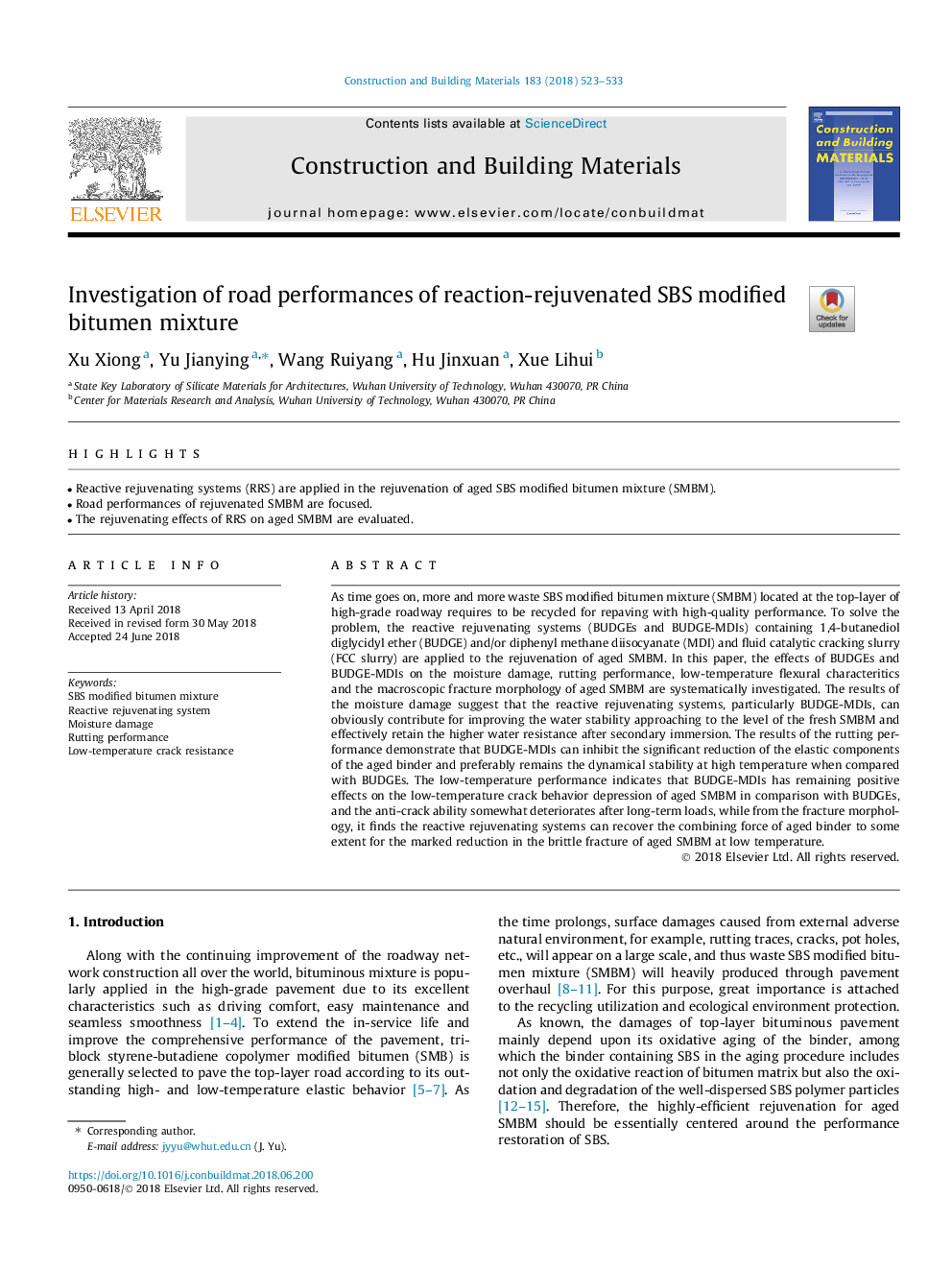| Article ID | Journal | Published Year | Pages | File Type |
|---|---|---|---|---|
| 6712277 | Construction and Building Materials | 2018 | 11 Pages |
Abstract
As time goes on, more and more waste SBS modified bitumen mixture (SMBM) located at the top-layer of high-grade roadway requires to be recycled for repaving with high-quality performance. To solve the problem, the reactive rejuvenating systems (BUDGEs and BUDGE-MDIs) containing 1,4-butanediol diglycidyl ether (BUDGE) and/or diphenyl methane diisocyanate (MDI) and fluid catalytic cracking slurry (FCC slurry) are applied to the rejuvenation of aged SMBM. In this paper, the effects of BUDGEs and BUDGE-MDIs on the moisture damage, rutting performance, low-temperature flexural characteritics and the macroscopic fracture morphology of aged SMBM are systematically investigated. The results of the moisture damage suggest that the reactive rejuvenating systems, particularly BUDGE-MDIs, can obviously contribute for improving the water stability approaching to the level of the fresh SMBM and effectively retain the higher water resistance after secondary immersion. The results of the rutting performance demonstrate that BUDGE-MDIs can inhibit the significant reduction of the elastic components of the aged binder and preferably remains the dynamical stability at high temperature when compared with BUDGEs. The low-temperature performance indicates that BUDGE-MDIs has remaining positive effects on the low-temperature crack behavior depression of aged SMBM in comparison with BUDGEs, and the anti-crack ability somewhat deteriorates after long-term loads, while from the fracture morphology, it finds the reactive rejuvenating systems can recover the combining force of aged binder to some extent for the marked reduction in the brittle fracture of aged SMBM at low temperature.
Keywords
Related Topics
Physical Sciences and Engineering
Engineering
Civil and Structural Engineering
Authors
Xu Xiong, Yu Jianying, Wang Ruiyang, Hu Jinxuan, Xue Lihui,
